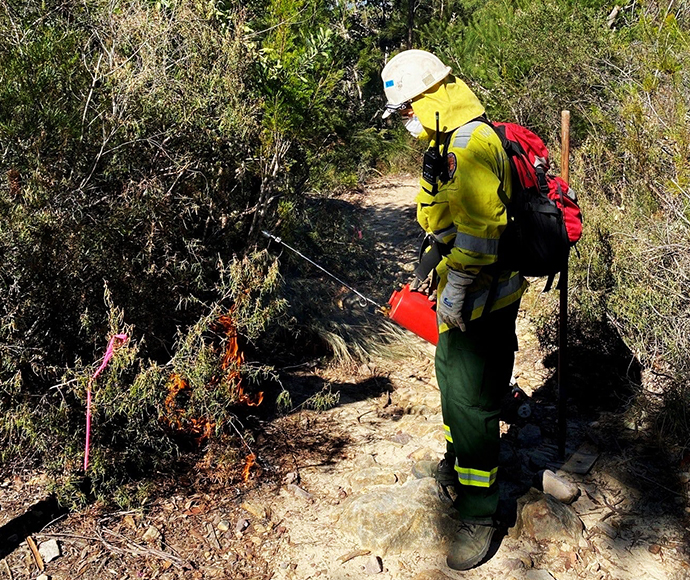National Parks undertaking hazard reduction burns across Sydney this weekend
The NSW National Parks and Wildlife Service (NPWS) and the NSW Rural Fire Service (RFS) are conducting multiple hazard reduction burns in national parks across Greater Sydney this weekend, pending appropriate weather conditions.
- 4 ha burn in Royal National Park, adjacent to Grays Point – commencing Sunday 10 September
- 364 ha burn in Berowra Valley National Park, west of Berowra Creek and north of Crosslands Rd, Galston – on Sunday 10 September and Monday 11 September
- 142 ha burn in Ku-ring-gai Chase National Park, north of St Ives Chase – on Sunday 10 September and Monday 11 September
- 174 ha burn in Royal National Park, east of Bundeena – on Monday 11 September and Tuesday 12 September.
The burns will reduce bushfire fuel, including dry leaves, sticks, branches and small shrubs, in strategic areas of the parks. This will lessen the spread and intensity of future bushfires and help protect nearby private properties and community assets.
Smoke may be visible in the vicinity of the burns and, depending on wind conditions, may drift into surrounding areas.
People vulnerable to smoke are encouraged to remain indoors, if necessary, and keep their doors and windows closed to reduce exposure.
People with known health conditions can sign up to receive air quality reports, forecasts and alerts via email or SMS from the Department of Planning and Environment
If you are planning to visit a National Park this weekend, check NPWS Alerts
Hazard reduction burns are essential to reduce bushfire fuel loads to help protect parks, neighbours and communities from future bushfires.
These burns are some of the many hazard reduction operations undertaken by NPWS across NSW this year, many with assistance from the Rural Fire Service and Fire and Rescue NSW.
All burns around the state are coordinated with the NSW Rural Fire Service (RFS) to ensure the impact on the community is assessed at a regional level.
For health information relating to smoke from bush fires and hazard reduction burning, visit the NSW Health website
More information on hazard reduction activities is available at NSW Rural Fire Service
